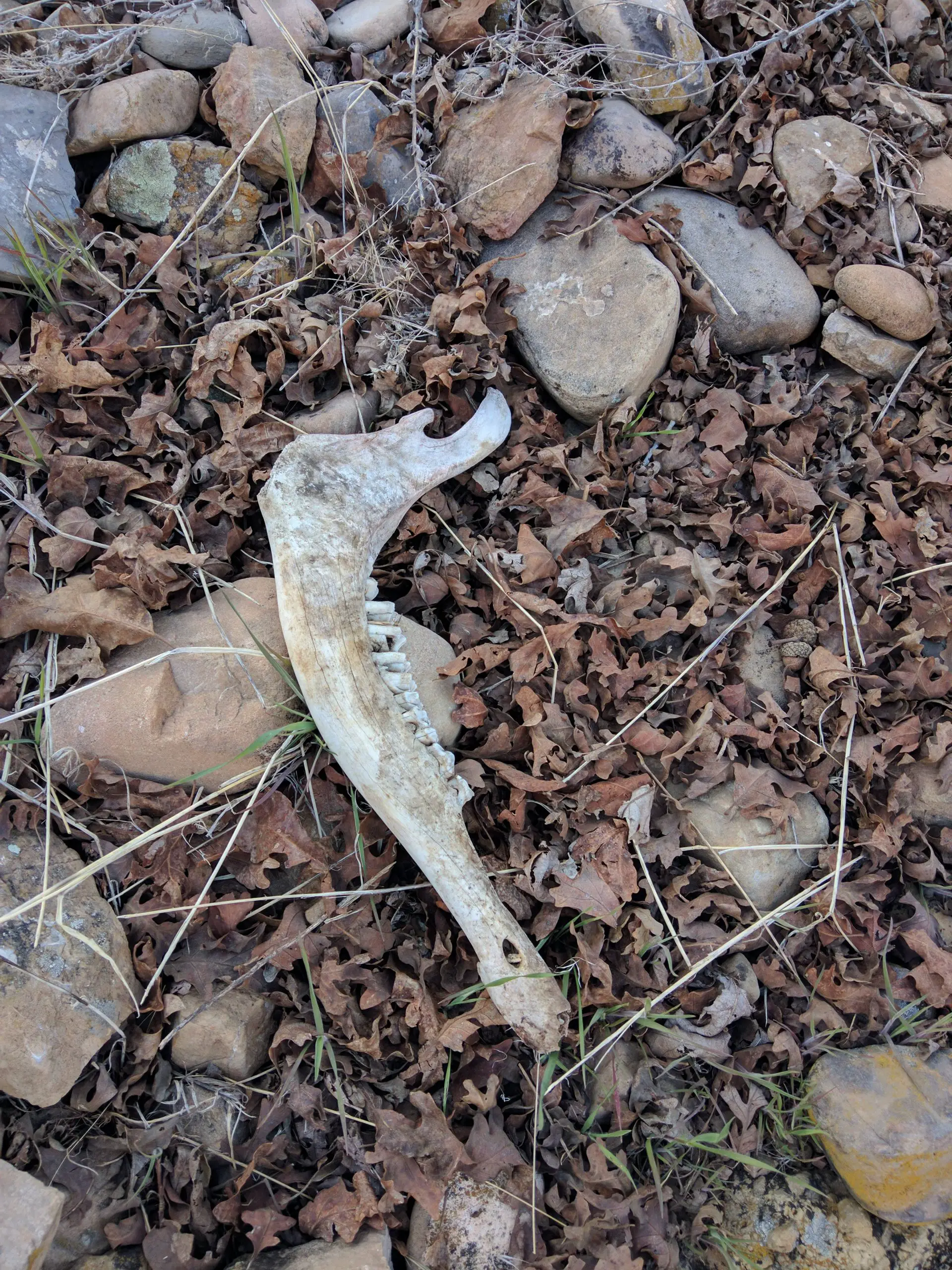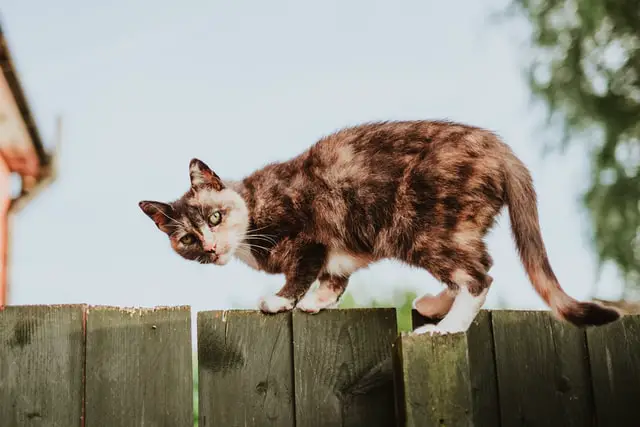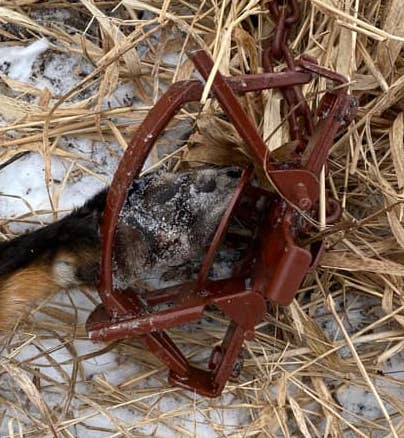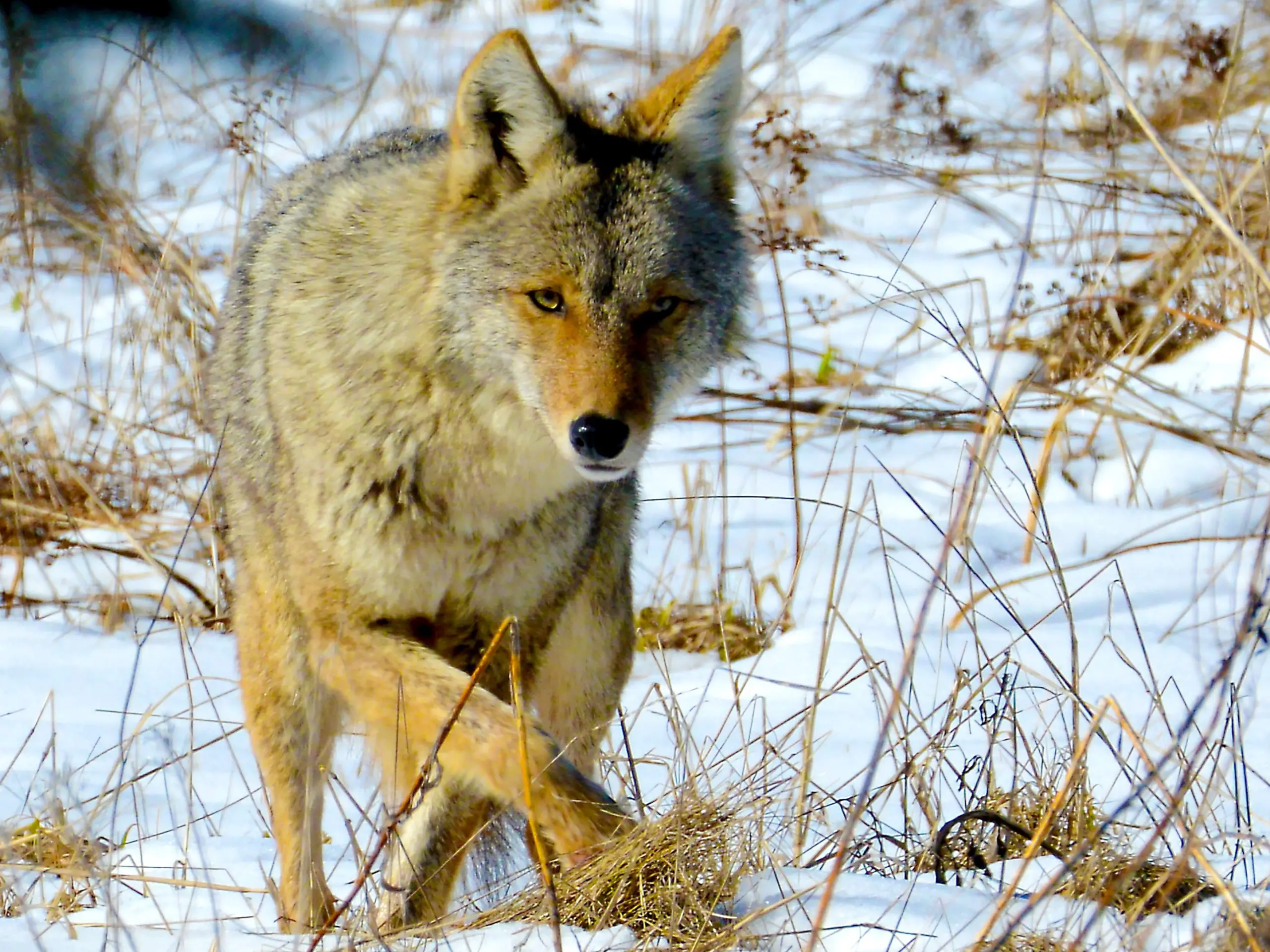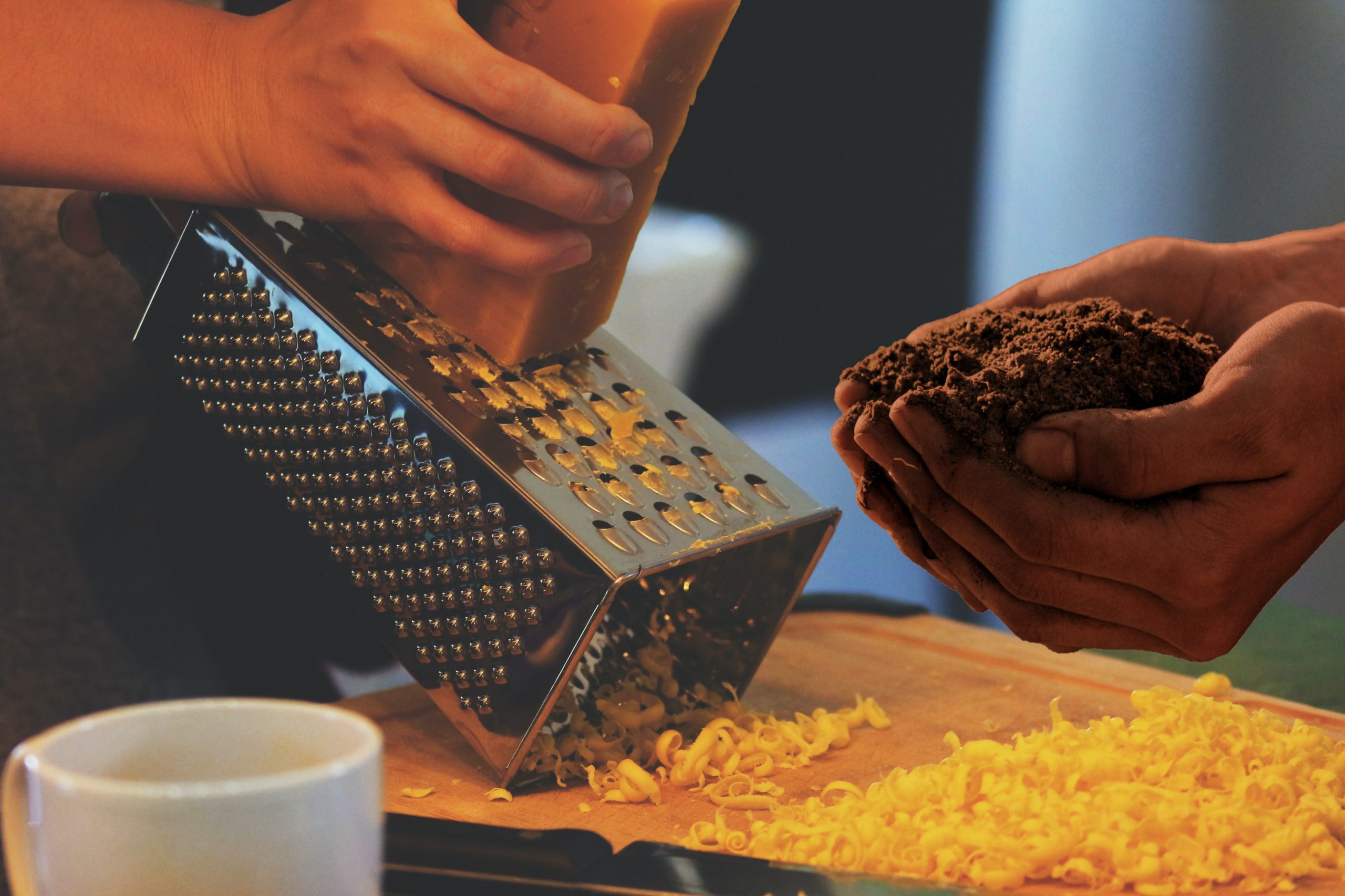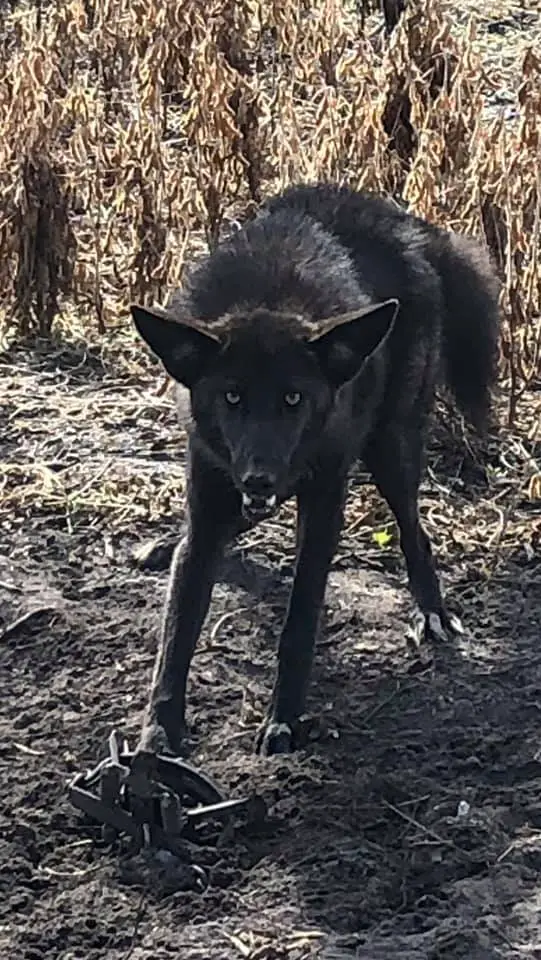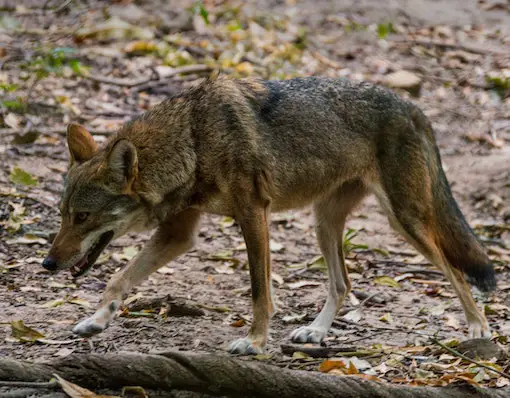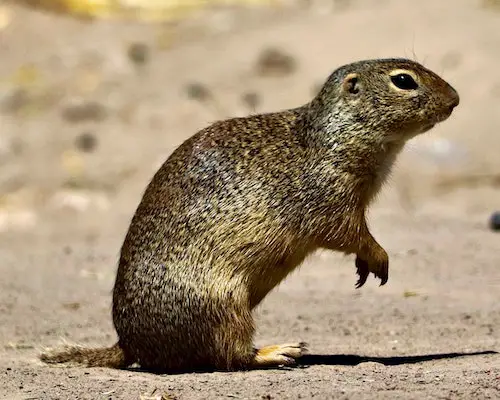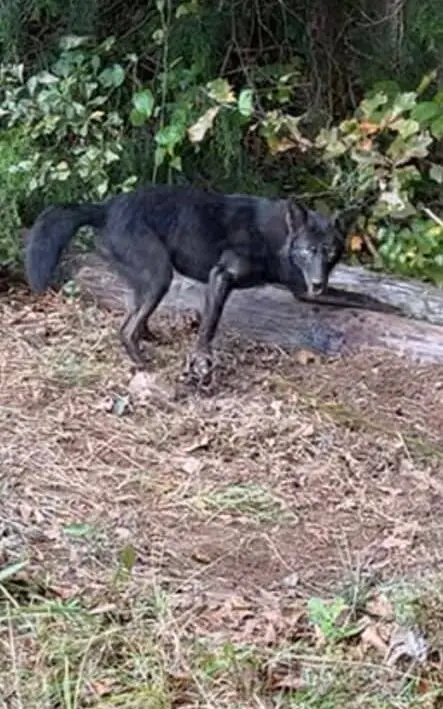13 Mistakes to Avoid When Coyote Trapping (Beginners Guide)
Are you setting your taps on sign?
A common mistake that I had when starting to trap is I just put a bunch of traps out where I thought coyotes would be traveling. It was a complete shot in the dark and I ended up catching a bunch of raccoons and only one coyote.
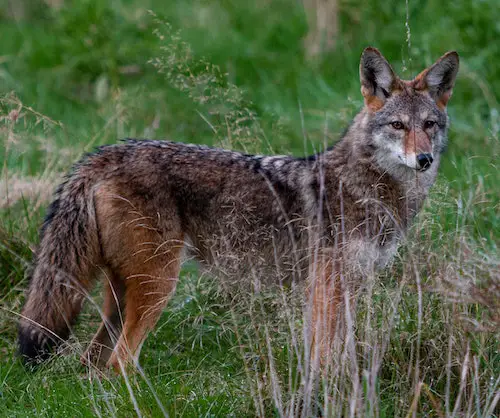
It can be a little difficult to find sign but they will give themselves away. The easiest way for me to tell if coyotes are in the area is if there is scat on the ground. The fresher the better. You know if there is fresh coyote scat there a coyote has been by recently and will probably come by again.
Check out this article I wrote on coyote scat and how to identify it.
Are you putting out enough traps?
Traps usually come in a pack of six or a dozen. At a minimum you probably want six traps when starting to trap coyotes. The more traps you have the more likely you are to catch what you are after. Especially if you put each trap in a location where it has a good possibility to trap a coyote.
If you need some more coyote traps check out the article I wrote about the best coyote traps.
Are you spreading your traps out?
When I started trapping I went to one hillside and put all of my ten or so traps close within 100 yards of each other. They were also on the same trails.
Spreading out your traps and finding several locations may be a more productive option so you are not trapping the same group of coyotes with all your traps. Finding spots along a road may be a good option to cover more ground.
Do you have enough patients?
Are you willing to wait for the coyote to come? Many people don’t catch a coyote in their first season. I was lucky to get one. It took probably four weeks and several raccoons and domestic dogs in my traps before I caught a coyote.
It also depends on the coyote population in your area. The more coyotes that are passing your trap the more likely you are going to be to catch one of them. Be patient, put in the time to learn as much as you can and keep trying, you will trap a coyote.
Have you been using wax dirt?
Wax dirt is super for keeping your traps working in raining and freezing weather. If your trap gets wet and then freezes at night then you may miss coyotes because the trap is frozen to the ground.
Wax dirt is the answer. Wax dirt will keep the water out of the dirt around your trap for longer and catching more coyotes will be possible.
Be aware that your trap can get stuck in the ground in warm weather too. If it rains on your trap then you will need probably need to reset it. The sun will come out and possibly bake a crust of dirt over your trap that will also cause it not to fire.
Be watching for issues that your trap may be having and reset it.
Are you making the set to elaborate?
Making a coyote set too elaborate or unnatural is a common mistake and it will cause you to miss a lot of coyotes. A few things a coyote will stay away from is a set that is too big or has too much blocking.
Most coyotes will stay away if they feel uncomfortable so the goal is to make them think another animal such as another coyote or fox made the set. Trying to force them to step where you want them to, with too much brush, sticks, or logs can cause a coyote to avoid your set.
Think for and study it out yourself (use your brain)
If you are in the outdoors and you start observing where you are seeing coyotes or coyote sign, then you will know when you are setting your sets in the right area.
As you start seeing tracks at your sets, study why you think you missed that coyote. Did he step over the trap? Did he dig it up on the backside? What are some ideas you have to solve the problem?
Trapping is a game, learn and observe your surroundings. You may be able to learn things about your area that can’t be explained in an article online.
Do you use too much bait at your sets?
Most coyote baits are very strong-smelling baits. You don’t need tons of bait to get a coyote’s attention. If you can smell it super well when you walk past a set you are probably using too much bait or lure at a set.
Related: What do coyotes eat?
Are you bedding your trap so it won’t move?
A common mistake is to have a wobbly coyote trap buried under the ground. When a coyote steps on the side of the trap and is not initially right on the pan, or trigger of the trap, they will feel the trap wobble. When a coyote feels that trap wobble it will dig it up.
I have had coyotes dig up my trap several times and it is a good and a bad feeling. First, you are in the right place. The coyotes are coming in and you are in the right place. The downside of this is you need to bed your trap very well.
Sometimes when a coyote digs up your trap, it will urinate on it. When you bury the trap they may be able to smell it because of the urine. Trading out the trap or adding another one to the set can help you get the coyote. I tell a story about that in coyote trapping sets.
Are you using a good trap pan tension?
A good pan tension is vital to effectively trapping coyotes. The common mistake is having a trap pan tension that takes too much weight to trigger or way too little weight to trigger.
Trappers suggest a four-pound trap pan tension. I like to use a pan tension that is heavy enough that I don’t think I am going to set off the trap by slightly spreading the dirt on top of the trap with my hand, but low enough that it will fire super easy when compressed.
There is a trap pan tension testers that you can buy to get your trap pan tension correct and set to the four pounds of tension.
Are you using the wind direction in your favor?
The wind direction can cause you to make a big mistake at your coyote sets. Coyotes can smell very well but if the wind is blowing the scents away from the common path of travel of the coyote they won’t smell it.
The simple fix for this mistake is to pay attention to the wind direction and figure out what it is throughout the day and if it changes, you may need to put sets on both side of the path of travel to get them to smell one of the sets depending when they pass.
Do you use urine at your coyote sets?
If you know that coyotes are passing your sets or shying away from them, based on tracks or using trail cameras, you might be making the mistake of not using urine at your sets.
Coyotes are commonly nervous about sets because they can still smell the human scent at the set. Urine can help them commit and come into the set. It makes them feel another coyote or fox has been there and they want to steal what they buried or investigate where they marked their territory.
Do you have the right equipment for trapping?
When trapping some people buy a lot of different equipment. What do you need to go trapping? Here are some ideas on what to use when you are trapping.
- MB 450 Traps
- Best Coyote Traps
- Pack Basket
- Trapping Bag
- Buckets
- Trapping Hammer
- Trapping Sheds
- Trapping Cabins
- More Trapping Equipment
Trapping By State
- Alabama Trapping
- Alaska Trapping
- Arizona Trapping
- Arkansas Trapping
- California
- Colorado
- Connecticut
- Delaware
- Florida
- Georgia
- Hawaii
- Idaho
- Illinois
- Indiana
- Iowa
- Kansas
- Kentucky
- Louisiana
- Maine
- Maryland
- Massachusetts
- Michigan
- Minnesota
- Mississippi
- Missouri
- Montana
- Nebraska
- Nevada
- New Hampshire
- New Jersey
- New Mexico
- New York
- North Carolina
- North Dakota
- Ohio
- Oklahoma
- Oregon
- Pennsylvania
- Rhode Island
- South Carolina
- South Dakota
- Tennessee
- Texas
- Utah Trapping
- Vermont
- Virginia
- Washington
- West Virginia Trapping
- Wisconsin
- Wyoming Trapping
